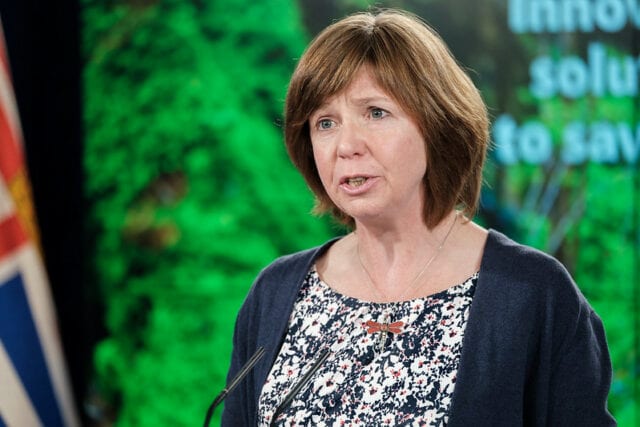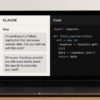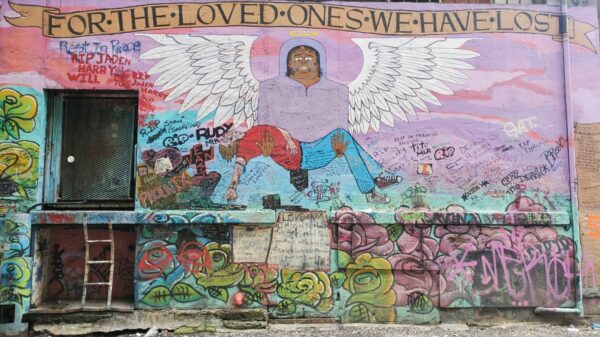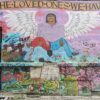British Columbia will be phasing in a prescribed safe supply program to counter the toxic and increasingly deadly supply of illicit drugs, more than five years after the public health crisis was declared.
Announced Thursday, the phased policy is intended to reduce stigma and end criminalization around substance use while boosting support for people using drugs.
“With more than 7,000 lives lost to toxic illicit drugs, we need new measures to connect people to the supports they need to stay safe,” says Dr. Bonnie Henry, provincial health officer.
“Reducing harm for people who use drugs is the right thing to do. Bringing in this new policy to expand prescribed safer supply is a big change for B.C.’s health-care system,” she said in a statement. “It’s about meeting people where they are at, reducing risk of toxic drug death and connecting people to the care they need and deserve.”
The phased policy works within the federal Controlled Drugs and Substances Act, which requires a prescription for a controlled substance.
“Once fully implemented, people who use drugs and who are at high risk of dying from the toxic illicit drug supply will be able to access alternatives covered by Pharmacare, including a range of opioids and stimulants as determined by programs and prescribers,” reads the provincial statement.
Read more: Covid-19 worsens Canada’s toxic opioid crisis amid decriminalization talks
The announcement comes as B.C.’s toxic drug crisis continues to take the lives of about six people a day, and this year could be the deadliest on record.
In the first five months of 2021, 851 people have died in B.C. from toxic illict drugs.
The province acknowledges safe supply is one of many tools needed to save lives during the health crisis.
While B.C. is the first in Canada to introduce this type of health measure, some say the prescriber model isn’t the best approach, including the leader of B.C.’s Green Party.
“It will not be enough to drastically reduce the deaths from the toxic street supply,” Sonia Furstenau writes.
https://twitter.com/SoniaFurstenau/status/1415804527953858560
A prescriber-driven model is a half-measure at best.
It poses a risk for future safe supply initiatives.
This is the scapegoat the government needs to say ‘well we tried safe supply but it didn’t work’.
We must pushback on this approach.
This here is #SafeSupply .@DULFBC https://t.co/y6P6lolebQ
— Nurse Ranger (@CoreyRanger) July 13, 2021
The day before, advocacy groups Drug User Liberation Front (DULF) and Vancouver Area Network of Drug Users (VANDU) handed out free, tested meth, cocaine and heroin.
Coun. Jean Swanson joined DULF and VANDU, later saying in a tweet “6 deaths a day from poison drugs is way too many. 1 is too many. Safe supply now!!”
I got to hand out safe drugs today with VANDU And DULF. 6 deaths a day from poison drugs is way too many. 1 is too many. Safe supply now !! pic.twitter.com/YokjBLBHC4
— Jean Swanson (@JeanSwanson_) July 14, 2021
BREAKING NOW: @DULFBC @VANDUpeople are handing out free heroin, cocaine and crystal meth in front of the Vancouver Police department offering a safer supply of drugs that were all checked and contain no fentanyl! Real #safersupply #harmreduction pic.twitter.com/FZjUKn8j3c
— guyfelicella🇨🇦🍁 (@guyfelicella) July 14, 2021
In the coroner’s latest report on illicit toxic drug deaths, it’s noted there’s been a greater number of cases with “extreme fentanyl concentrations” after last April, compared with previous months.
Read more: Rhode Island first US state to sanction harm-reduction centres
Phased approach ‘ensures patient and prescriber safety’
The first step is implementing the policy through health-authority funded programs already in place and already prescribing alternatives to illicit drugs, such as opioid agonist treatment, oral and injectable tablet programs, as well as through new programs supported by this year’s budget, including service hubs and outreach teams. Federally-funded safe supply programs will deliver services too.
The first phase will collect data and evaluate the approach as it’s implemented in health authorities across the province. Phase 1 is expected to last 18 to 24 months, then will expand access “once the clinical guidance is developed based” on the findings.
According to the province, the phased approach “ensures patient and prescriber safety” while gathering evidence to guide the policy.
Read more: BC to request federal exemption to decriminalize drug possession
Read more: BC health officials lukewarm on cannabis as harm reduction

‘There is more to do, and we won’t stop working until we turn this crisis around,’ says Minister of Mental Health and Addictions Sheila Malcolmson. Image via Government of BC Flickr
Up to $22.6 million from the 2021 budget will be directed to health authorities over the next three years to implement, monitor and evaluate the approach.
“For people who use drugs or who care about someone who does, the risk of death is omnipresent because of the increasingly toxic illicit drug supply,” said Sheila Malcolmson, minister of mental health and addictions.
“At the start of the pandemic, B.C. provided access to some prescribed safer supply medications to save lives from overdose and protect people from COVID-19. Building on what we’ve learned, we’re expanding access to prescribed safer supply to reach more people and save more lives. This is one tool within a comprehensive response to the overdose crisis as we continue to also build up a treatment system so everyone can get the care they need. There is more to do, and we won’t stop working until we turn this crisis around.”
Read more: Canadian government awards $1M for drug-testing technology
Follow Kathryn Tindale on Twitter
kathryn@mugglehead.com









